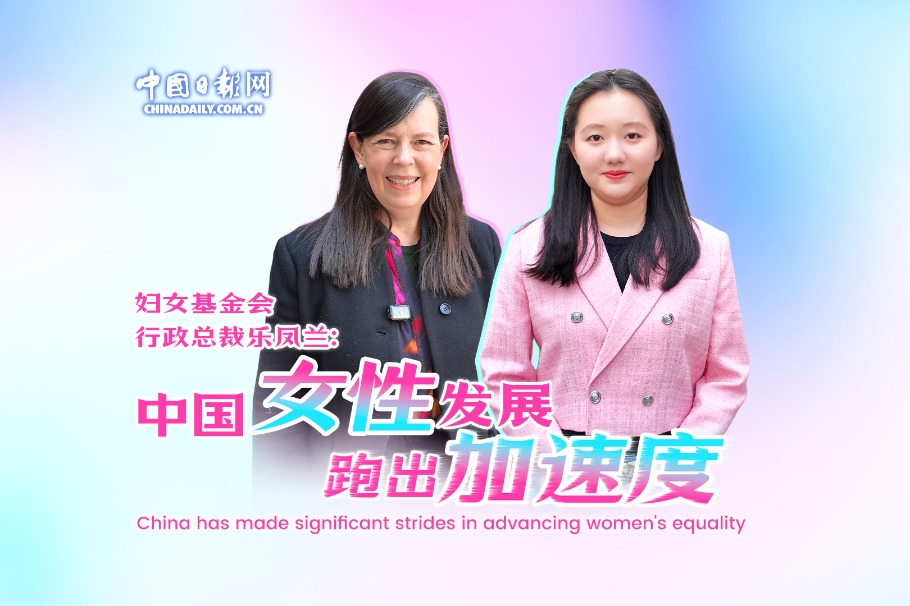An accomplishment to assimilate


Africa has much to learn from China's experience in successfully reducing poverty
Over the last 20 years perceptions of Africa have changed dramatically. It is no longer viewed as a "hopeless" continent but rather as a "hopeful" one. This change was underpinned by a movement from the negative and stagnating economic growth rates of the 1970s and 1980s to positive and relatively stable ones in the subsequent years. However, Africa's image as a continent of wars, famine and abject poverty remains unchanged, albeit with minor improvements in peoples' welfare. This paradox of entrenched poverty in a "rising Africa", in terms of revamped growth, has been a preoccupation for many decades of politicians, academicians, researchers, policymakers and development partners, searching for policies, strategies, programs and projects to tackle the problem of poverty.
In the context of doing so, a confluence of policies have been formulated at the global, regional and country levels, and in some cases implemented, but the speed of poverty alleviation in Africa has been adamantly slow when compared to that of other developing regions. This gloomy picture, coupled with projections which show that the world's poor will in the future increasingly be concentrated in Africa, calls for urgent and concerted efforts to address the poverty in the continent.
Indeed, there are many causes of poverty in Africa, including conflict, environmental degradation and its high population growth rate.
However, the fundamental cause is that the revamped growth has neither been inclusive nor ushered in structural transform of African countries' economies. The delayed transformation is evidenced by the dominance of low productivity agriculture, as the source of livelihood for the majority of the population on the one hand, and the de-industrialization of African economies on the other.
This state of affairs is contradictory, to both theory and practice, which underscore the symbiotic relationship existing between the two sectors in the sense that the development of the agriculture sector, in terms of enhancing its productivity, is the surest way for alleviating poverty and promoting industrialization. Indeed, the development experiences of the Asian countries, especially China, are a clear testimony to this phenomenon. Their successful industrialization experiences, which not only led to higher productivity in the agricultural sector, but also reduced poverty and inequalities quite dramatically, need emulating and adapting to the specific conditions of African countries. To the extent that China is Africa's second-largest trade partner and there are a variety of cooperation arrangements among them, African countries are eager to see that the cooperation becomes a powerful platform cum force for the realization of the structural transformation agenda and poverty alleviation. In its fight against poverty, Africa has a lot to learn from China's socioeconomic model which was able to reduce poverty significantly within a reasonably short period of time.
In the process of completing the building of a moderately prosperous society in all respects, China has accumulated rich experience in poverty reduction, including maintaining sustained and steady economic growth, continuously introducing social policies that are conducive to the development of poor regions and poor people, incorporation of poverty alleviation and development into China's overall development strategy, and taking development as the fundamental way to reduce poverty. Other important experience includes giving full play to the initiative of poverty alleviation targets, prioritizing the development of agriculture and comprehensively promoting the economic and social development in rural areas, giving priority to the building of infrastructure such as roads, water supply, electricity, gas and housing in poor regions, and stimulating social participation so as to let the government, society and market play their respective roles.
During the reforms of more than 40 years in China, the country adopted a socioeconomic development model which was, and continues to be, inclusive in nature. And in that regard, it has lifted over 800 million people out of abject poverty.
Despite the COVID-19 challenges, the Central Poverty Alleviation Work Meeting in March 2020, made it clear that the poverty-alleviation target of ensuring the remaining 5.51 million people, 52 counties and 1,113 villages are lifted out of poverty by the end of 2020, remains unchanged.
This unprecedented performance provides yet another lesson to the African continent which is a home to over 400 million people still living in abject poverty. That is, in order for Africa to effectively eradicate poverty it should adopt some key aspects of the Chinese model of development, while being cognizant of local contexts, but also enhance cooperation with China in all economic spheres.
Poverty is not a destiny and it can be overcome.
The author is a professor of Economics of the University of Dar es Salaam, the director of the Centre for Chinese Studies, and the chairman of Tanzania's Fair Competition Commission. The author contributed this article to China Watch, a think tank powered by China Daily. The views do not necessarily reflect those of China Daily.


































